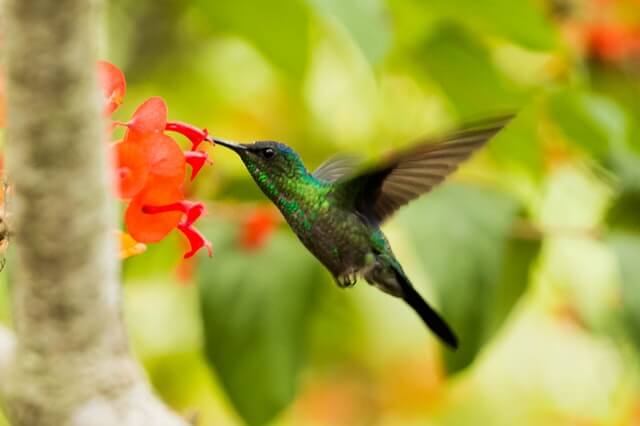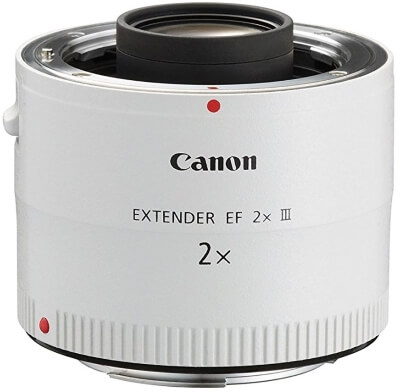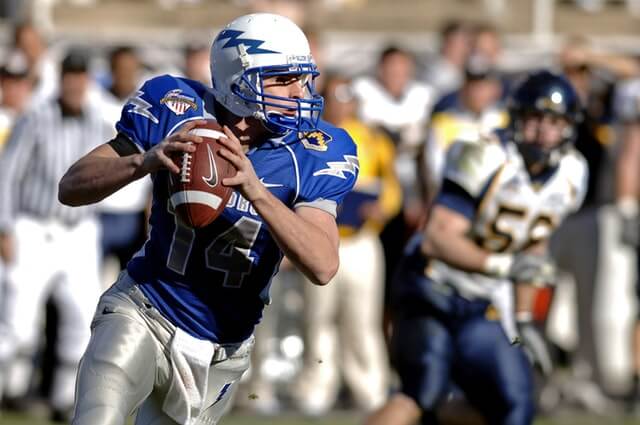Telephoto lenses are lenses that have a focal length of 70 mm and more, it can reach 800 mm. They can provide you with a narrow field of view. These long lenses enable you to compress a distance and compress the sense of depth. They can pick out specific objects from far away distance. They have a strong resolving power and an inherent shallow DOF, where the slightest lateral moment can take a subject out of view. Telephoto lenses are great for wildlife, portrait, sports, and documentary types of photography. They enable you to capture subjects from hundreds of feet away. In this article, I’m going to explain the telephoto lenses, their main features, and when you use them.
What is telephoto lens?

A telephoto lens is a lens that appears to magnify distant objects. To do that, they need to have a focal length longer than that of a normal lens, or a lens that approximates the optical qualities of the human eye. A normal lens has a focal length of between 40mm and 58mm on a full frame camera so any lens with a focal length longer than 60mm can be considered a telephoto lens. The longer the focal length, the more magnification there is.
The most common telephoto zoom lenses have a focal range of 70mm to 200mm. Any lens with a focal length longer than about 300mm can be considered a super telephoto lens as well.
As you can see, the telephoto lenses are classified according to their focal length, a lens is usually considered to be a telephoto lens if it has a 35mm film equivalent focal length that is longer than 70mm. The range of focal lengths considered to be “telephoto” is very large. The longer the lens focal length, the more capable it is of filling the frame with subjects from even further away.
- Short-telephoto lenses: About 70mm to 100mm, or even 135mm. These are ideal for shooting portraits and candid shots (for example at weddings), where you are quite close to the subject but don’t want to intrude too much. They are compact and lightweight and can be hand-held for fast shooting.
- Medium telephoto lenses: 135mm to 300mm. These lenses are popular with sports and action photographers who can get quite close to the action, for example standing on the sidelines. For this type of photography, the aperture is critical in minimizing blur, particularly when photographing fast-moving subjects.
- Super telephoto lenses: 300mm and above: they are a popular choice among professional wildlife and nature photographers, as well as sports photographers who can’t get very close to the action (e.g. motorsport photographers). The longest lenses have telescope-like magnification, making them great for astrophotography, although they can be extremely expensive.
What is the difference between Telephoto and Zoom lenses?
Some newbie photographers confuse the terms “telephoto lens” and “zoom lens.” This misconception is likely caused by point-and-shoot cameras that offer a “10x zoom.” In this sense, zoom actually refers to the amount of magnification range the lens is capable of (from a wide shot to a tight shot, for example), and not the total magnification power of the lens.
The term “telephoto lens” has a particular technical meaning in terms of lens design, but in common usage, it refers to a lens with a long focal length. While A “zoom lens” is a lens whose focal length can change. You twist the barrel or push a switch on the camera, and it takes in a narrower or wider field of view, making objects appear bigger or smaller.
A zoom lens is a lens that can go from wide-angle to telephoto range. Or it can go from a low telephoto range to a high telephoto range or from a low value of focal length to a high value of focal length. But a telephoto lens is specially made for working in the telephoto range.
So the term zoom means focal length you can change, and telephoto means long focal length. A lens can be one, or the other, or neither, or both.
Telephoto lens design and construction
There are two designs of the telephoto lens, the refractive and mirror lens design. They use a special construction to achieve a focal length that is greater than their physical length.
- Refractive telephoto lenses, also known as “negative” lenses, use two lens groups (known as “lens elements”). The first element bends the light inwards, and the second element straightens it out again before it hits the film or sensor. Refractive lenses produce a much higher-quality image than mirror lenses, with better sharpness and contrast, and more pleasing background blur. If you can afford this type of lens, it is a much better overall choice.
- A mirror lens, also known as a “reflex lens”, it uses mirrors rather than lenses to alter the path of light inside the lens. The main benefits of mirror lenses are that they are smaller, lighter, and cheaper. However, they suffer from inferior picture quality and have a fixed aperture which can limit their usefulness. They should really only be considered if you are on a tight budget
When to use a telephoto lens?
Telephoto lenses between 70 – 200mm are very popular for portraiture and product photography as well as nature and wildlife imagery. They allow the photographer to produce close crops on the subject.
While Super Telephoto Lenses provide a good range for sports and wildlife photography where the photographer is limited as to how close they can get to the subject.

In the case of portraiture, a telephoto allows the photographer to take the photo at a distance that does not intrude upon the subject. So if you want to do everything you could to put a background out-of-focus for a headshot you can do the following:
- Use a telephoto lens
- Use your largest aperture. That’s the smallest number.
- Get close as you can to your subject to fill the frame. The closer you get the more out-of-focus the background will be.

You can have a different perspective of the scene and make use of the telephoto lens compression; this lens compression will bring the background closer to your subjects than they really are. In the below photo, the fountain can look very near to your subject because of using a telephoto lens, even in reality, it is far from our subject.

Characteristics of telephoto lenses:
-
You can get closer with telephoto lenses
It let you “draw in” and fill the frame with subjects that are actually far away. A good example is shooting a bird that is flying and far away from you. You may check my post “Bird Photography – Step by Step Guide”

-
Narrow angle-of-view
This feature makes it easy to focus on your subject and keep unwanted background elements out of the frame. Photographers love the effect they can get by throwing distracting background details out of focus. The problem with all telephoto lenses is that it’s not always possible to get close enough to the subject.

The table below shows the value of the diagonal angle of views of some telephoto lenses with different focal lengths.

-
Shallow depth-of-field
With all camera lenses, a longer focal length means a narrower depth of field, and telephoto lenses are no different. Particularly with longer telephotos, it can be difficult to get your focusing spot on, and even a slight change in camera position can cause blurriness. Because of this, you should put your camera on a tripod when using anything but the shortest telephoto lens.
A telephoto lens makes it easy to create background blurs (background “bokeh”). This effect is amazing especially when shooting a portrait.

-
Perspective compression effect
The perspective compression of the telephoto lens makes elements look nearer to each other. Telephoto lenses are good at making the distances between far away and nearby elements look shorter. This is called the compression effect, and you can use it to reduce the sense of perspective in an image.
Lens compression is essentially the phenomenon of background elements appearing larger than they actually are – hence the scene becomes “distorted” since those background elements appear closer and larger than they are in real life.
When shooting the below photo, a telephoto lens is used to make the background ship and building, which are, in reality, far away, appear much closer to the subjects.

How to support a telephoto lens?
Short focal length telephoto lenses can generally be handheld without any noticeable blurring from camera shake. This is particularly convenient when photographing portraits or taking candid shots, where you have to react quickly. When hand-holding your camera, use the fastest shutter speed you can. A good rule of thumb is to use a shutter speed that at least matches your focal length – for example, when using a 200mm lens, you should use a shutter speed of 1/200th or faster.
Telephoto lenses with longer focal lengths are easily affected by camera shake due to their extreme magnification factor. Their narrow depth of field makes focusing difficult, and long lenses with a narrow maximum aperture may not be able to reach the shutter speeds required for hand-holding. They also tend to be heavy, making them uncomfortable to hold for long periods of time. When using longer lenses, you should use a tripod or monopod to keep your photos sharp and to take the strain off your arms.
Alternative to telephoto lens

The most obvious alternative to a telephoto lens is to use a teleconverter with your available lens to increase its focal length. An x2 converter will double your focal length, taking a basic 70-200mm lens up to 150-400mm! In comparison to the cost of buying a 400mm lens, a teleconverter is a much more economical way to go.
Teleconverters do not weigh much, but professional telephoto lenses often do. For instance, Canon’s 100-400mm lens weighs 1,363g (about 3 pounds). If the weight of your camera bag is important to you, then a teleconverter may be a good alternative.
I recommend reading my post “What is Canon Teleconverter”, It will introduce you to the world of teleconverters.
Thanks for reading, I hope you enjoyed the article if you have any questions just post them below & I will be happy to answer you.
If you enjoy the site, don’t forget to subscribe, we will only inform you when a new article is posted.









Wow! this is another excellent quality post about telephoto lenses. I need to learn about photography for capturing pixel perfect photo. I believe your article will not only help me but also teach many beginners who want to be expert on photography. I already bookmarked your site and going to share it with my other friends. Thanks for sharing this informative article.
Thanks for the comment
The more I read your articles the more I understand how much I don’t know in this field. I had a very vague understanding of the difference between zoom and telephoto lens but with your article I got a clear picture of their differences. Also I didn’t even know that there were teleconverters. They seem like a nice alternative to telephoto lenses and I guess if someone would like to try it’s a good starting point before buying a more professional one that costs more money. Thanks for the share.
I agree with you, you may try to use a teleconverter with your current lens as a start before buying an expensive telephoto lens, for information about this subject you may check my post “What is Canon Teleconverter“. And Thanks for your comment
Hi. I have been reading some of your posts and I gather you truly an expert on the subject. My question might sound a bit silly but I am no photographer even thou I like to take photos. My question to.you is do you think before someone invest in a certain type of lens would it be better if I take a photography course? Do you think it would be necessary to get the full benefits of these types of lenses?
thank you for your help
Hi Barbara
You are absolutely right, you should increase your knowledge in photography before investing in such expensive stuff. Taking courses or try self-learning, by the way, there are many learning resources on the internet and some of them are free. Also, there are a huge number of videos on Youtube, I already made my recommended list in the following post “YouTube Photography Tutorials”
Thanks for your comment, wish you all the success